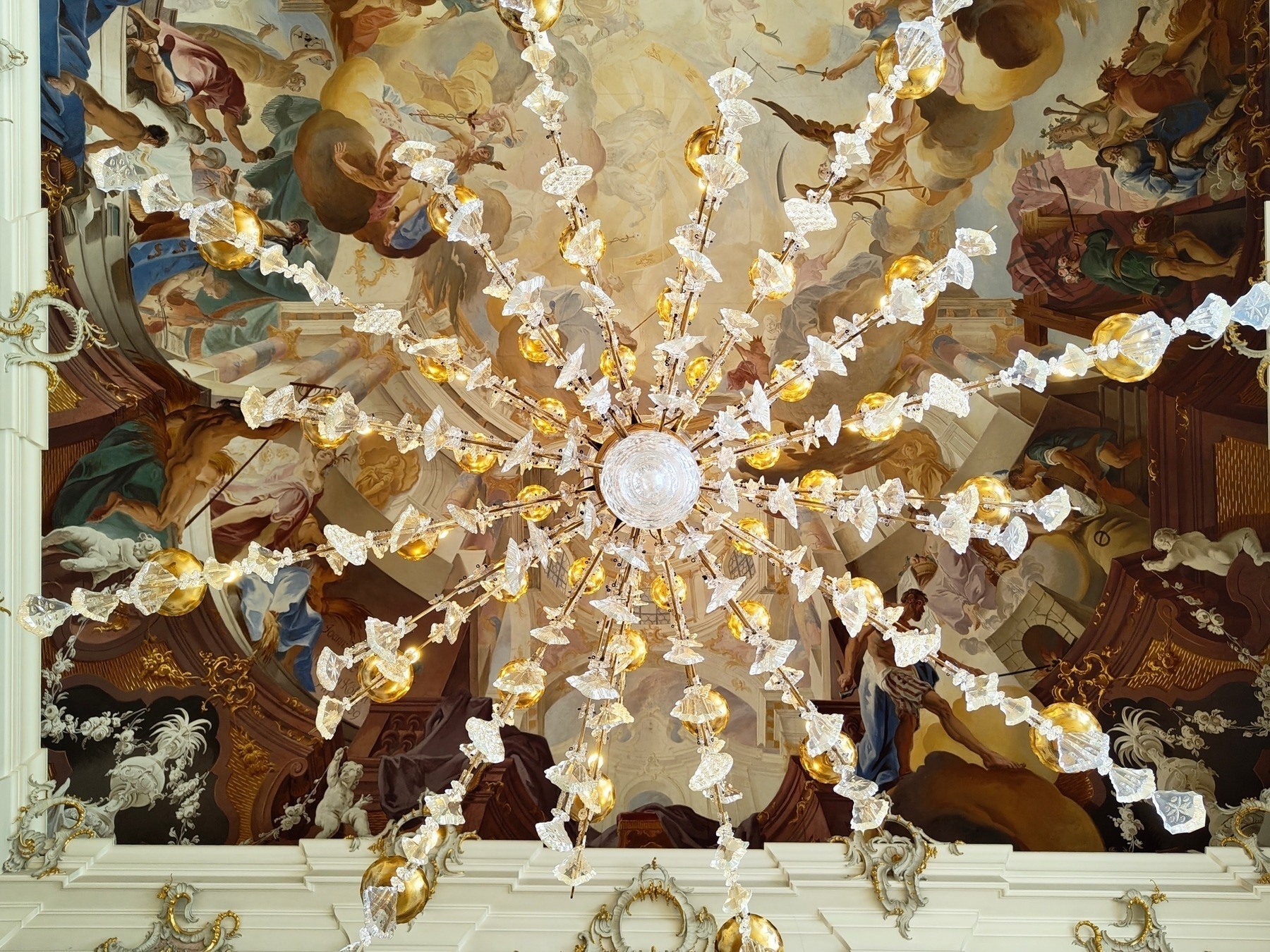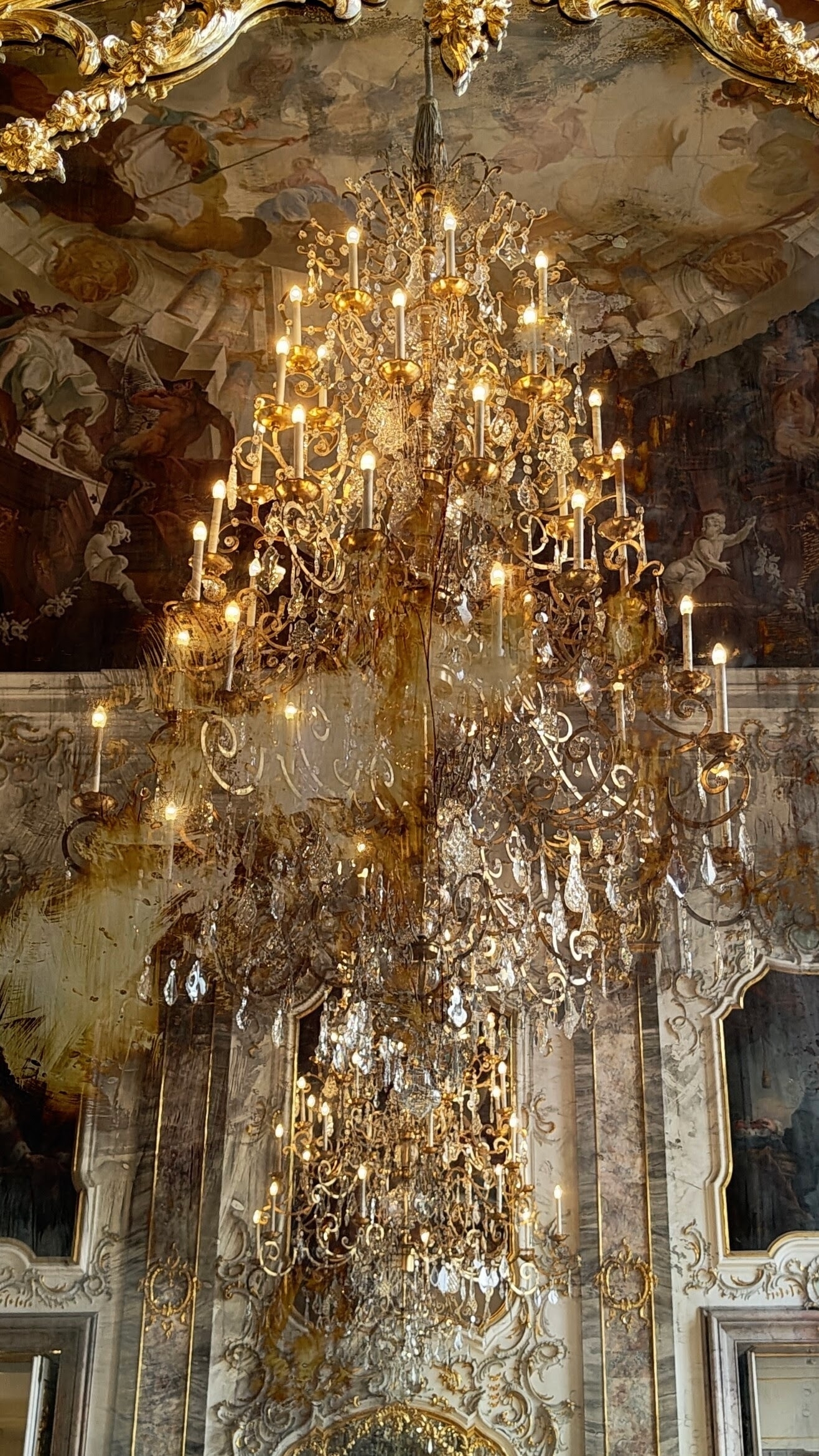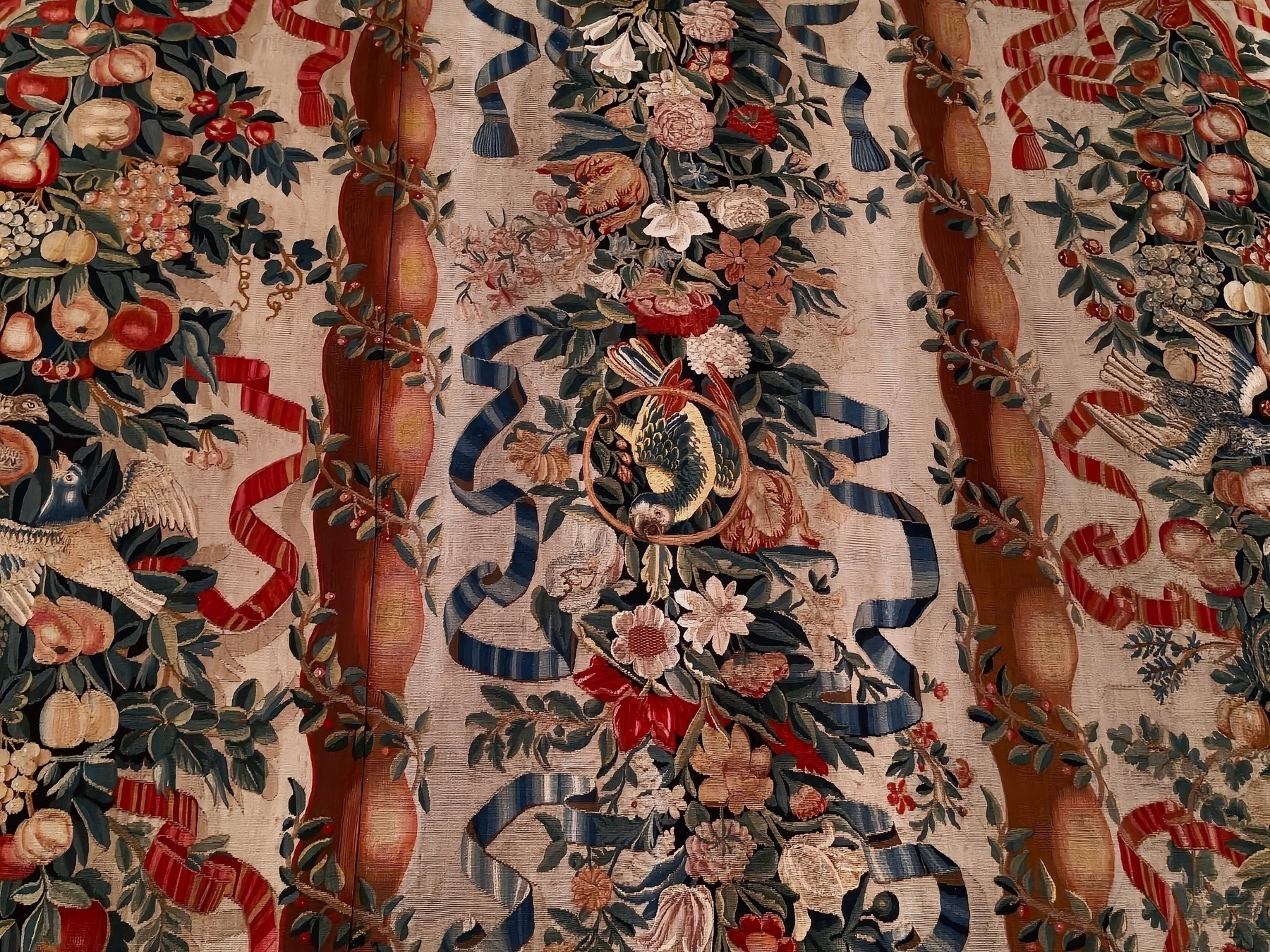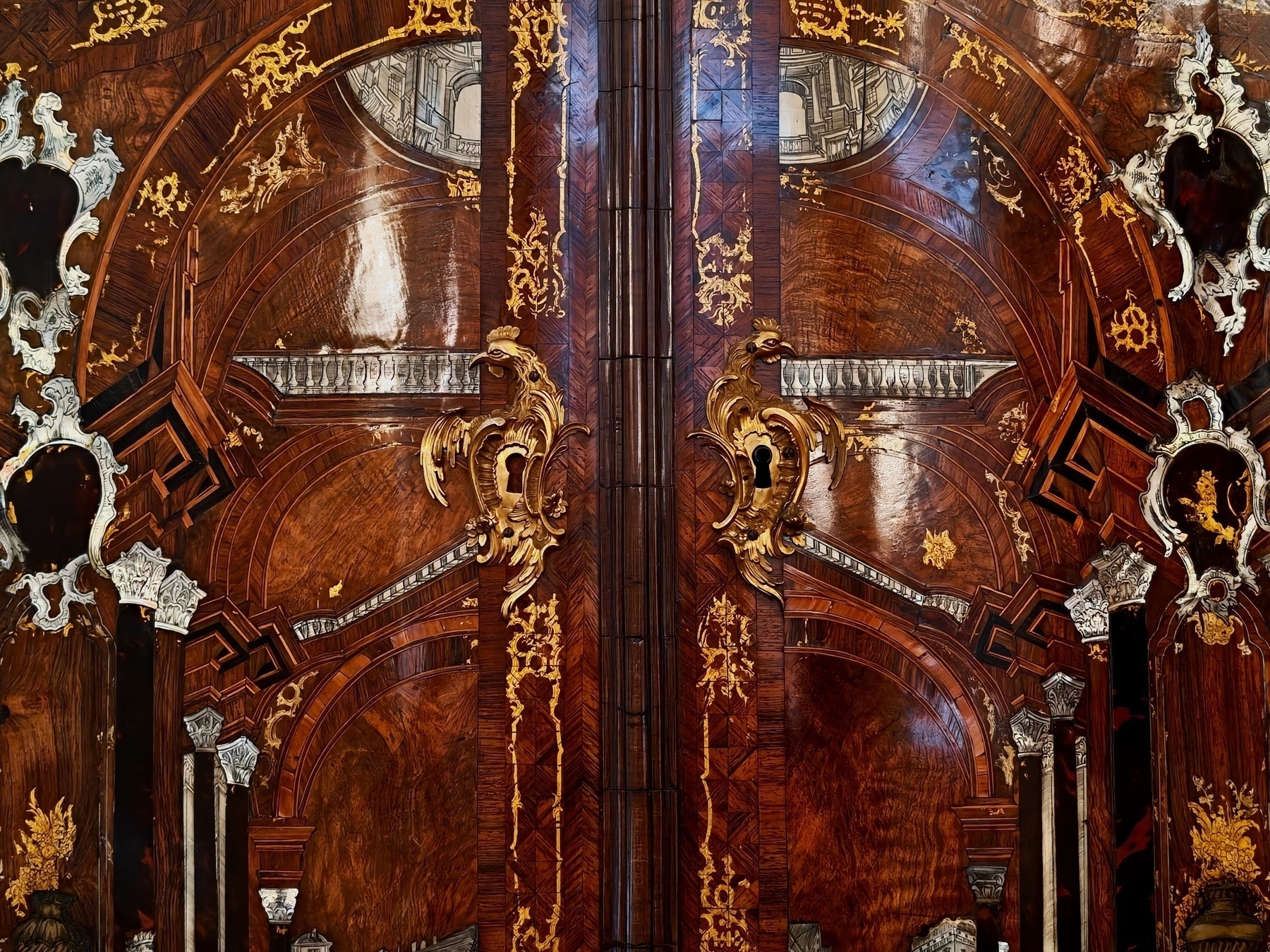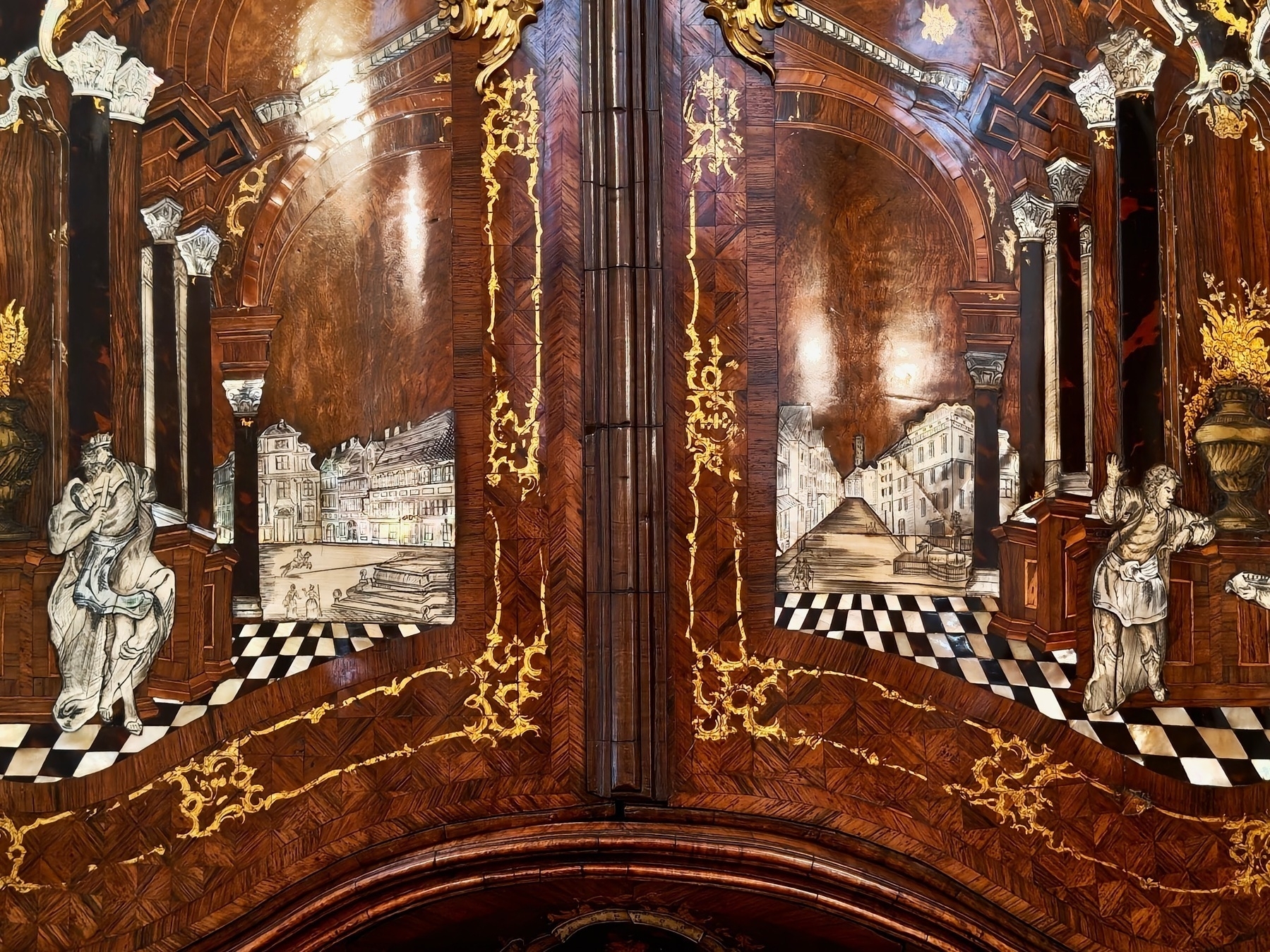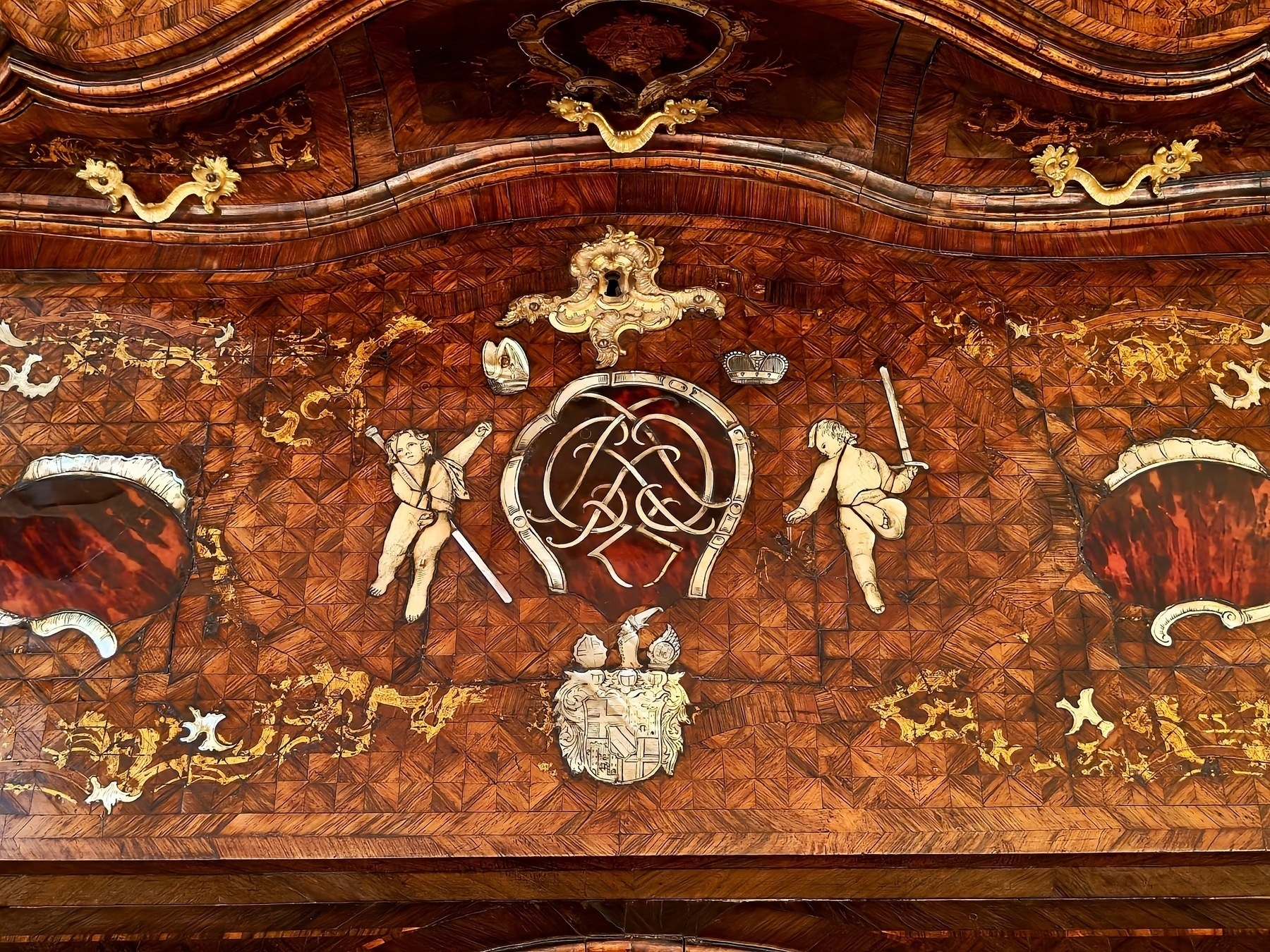A trip to Bruchsal Castle
We decided to accompany my in-laws part way on their trip back home and to discover Bruchsal Castle (Barockschloss Bruchsal) as part of our outing. It turned out to be a real jewel in what I had always assumed to be an unassuming industrial town “en route” to elsewhere (sorry for these presumptions, which I really should try harder to resist!).
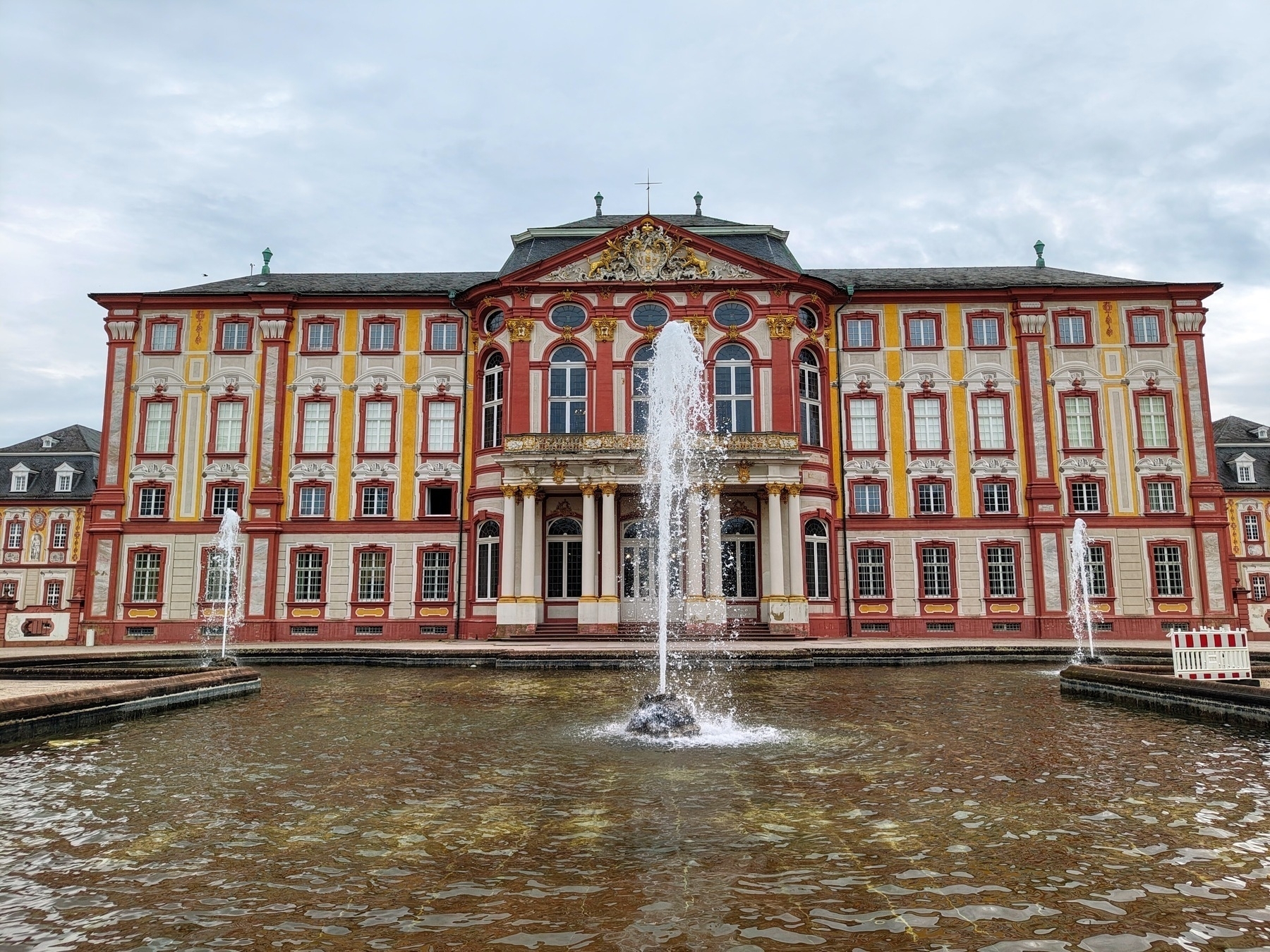
Indeed, the castle is initially a disappointment, looking a bit tatty and clearly restored with limited resources, paint replacing actual decoration for most of the building. It turns out that the castle was destroyed during WWII and painstakingly rebuilt in the 1970s, with whatever they had to hand. The jewels are the retained artefacts, which had been removed from the castle in around 1942, before the destruction in 1945. These artefacts include tapestries (Parisian and Belgian, in the main), and secretaries (in the sense of writing desks!) with fantastic inlays.
The building houses two further museums: a history of Bruchsal and the region on the top floor, in a setting that retains much of its 1970s “charm”; and a museum of musical automata, which fit very well the overarching theme that I picked out, of intricacy and patience.
Here’s a selection of photos from the house, which I would recommend as a place to visit - an not just en route…

